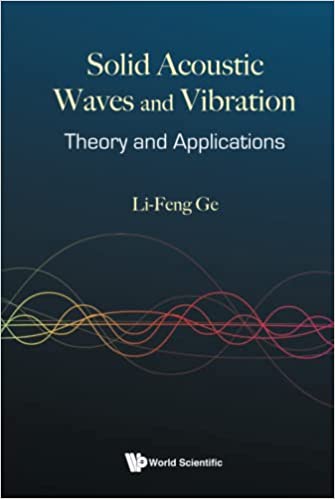English | 2021 | ISBN: 9811235007 , 978-9811235009 | 444 pages | True PDF | 19.46 MB
Solid Acoustic Waves and Vibration: Theory and Applications is an exciting new book that takes readers inside a fascinating subject. It is charming that there is a complex and delicate structure in characteristic values, which is revealed by introducing a conceptual system including space operator, space-time variable, reference Poisson's ratio, etc., and developing the analytical models for all limiting cases. The dispersion curves of waves in an elastic plate are determined completely, and a systematic and concise description of the fundamental theory of this subject is given. As MEMS and NEMS technology develops, a number of new issues presents, such as the effects of residual stress, thin-film, air captured in micro-air-gaps and coating on the system, which make the problem complicated and spark debates. Micro-diaphragms are modeled by a plate in tension and mounted on air-spring, a general TDK equation of vibration of plates, including free, forced and damped vibrations, and its solutions are developed. The loading effect of coating is modeled by a mass load; a micro-load theory is presented. This book is a summary of the author's long-term research on electromechanical transducers and these related issues, and they provide an excellent description combining theory and application. The principle of electromechanical transducers, which achieve the conversion between mechanical and electrical energy, occupying a particularly important position in the field of robotics and intelligent machines, is elucidated by introducing the concepts of space-time operator, complex transformation factor, inversion impedance, etc., and an unfiled equivalent circuit is presented. The applications in micromachined capacitive ultrasonic transducers (mCUTs, CMUTs) for biomedical imaging and ultrasonic mass resonators (mUMRs) for biochemical sensing, including plate-type, beam-type, nanowire, bulk-wave, LAW and SAW delay-line ultrasonic resonators are described. This interdisciplinary book will be increasingly attractive as MEMS and NEMS technology develops.
DOWNLOAD





 Reply With Quote
Reply With Quote
